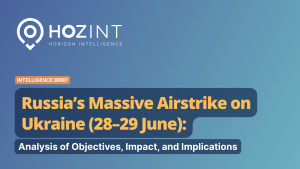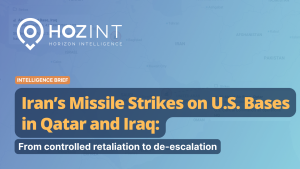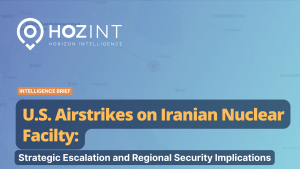For more than 1 month, Iran has been facing a series of unprecedented nationwide civil protests against the ruling regime led by the Supreme Leader Ali Khamenei. The protests occurred daily for almost seven consecutive weeks across the whole country since September 16, when Mahsa Amini died. Mahsa Amini was a 22-year-old Kurdish-Iranian woman who died after being severely beaten by the Guidance Patrol officers for wearing the hijab improperly.
Therefore, the initial motivation of the protests, mostly concentrated initially in Tehran and Saqqez, was to demand increased rights for women and the abolition of the hijab law in Iran. As the protests gained momentum, the demonstrators demanded the overthrow of the Iranian regime. From this perspective, another major catalyst for the protests is the poor Iranian economy defined by soaring prices, high levels of unemployment, and poor living conditions. The response of the Iranian government to the protests came in a violent form, with security forces causing several fatalities among civilians. Restricted access to social media and Internet shutdowns were also measures imposed at a national level. In this context, the intensifying trend of violent protests represents an existential threat to the regime along with economic turmoil.
Analysis
Over the past 2 decades, Iran has experienced a series of similar protests. In particular, the protests in 2009, 2017 and 2019 were fueled by significant political, economic, and social frustrations. Such sentiments were perpetuated in the current civil unrest. For example, the inflation rate rose from 35.9% at the beginning of the year to 54% as of July 2022. The economic hardships are also aggravated by a falling currency and the sanctions imposed by the US in response to Iran’s nuclear deal program in 2018. Recent data shows that more than a third of Iranians are living in poverty (33% as of 2019).
However, the Mahsa Amini protests are different in nature from the previous ones. Unlike the previous series of civil disorders, the current wave of protests brings together all strata of Iranian society, crossing geographical barriers, social and ethnic divisions. At the forefront of these protests are women and the Iranian youth. According to Hozint data, most anti-regime protests were organized by students from different universities across the country. To show solidarity, workers from different industrial sectors, including oil and gas, went on strike for an indefinite time. Lastly, protestors are also coming from the upper class including doctors, teachers and members of civil society.
From the outset, the protests occur in the form of a flash mob with people chanting slogans, setting fires and drivers blocking roads to slow down security forces. The events are recurrent in all major cities, including Mashhad and Qom (the Shia holy cities). The violent response from the Iranian government was widely condemned and attracted numerous sanctions from various actors, including the EU, Canada, the US, and the UK. As an example, the EU set sanctions to impose travel and export bans, as well as freezing the assets of various individuals. The magnitude of the events and their side effects threaten the political stability of the current theocratic regime.
Forecast
As it currently stands, the protests are likely to continue in the immediate future. Despite more than 280 people killed during the protests – as of October 31st – the escalation of protests at a larger scale is more likely than ever. The main hubs for these protests will remain the capital and the cities in the Kurdistan provinces of Sanandaj and Saqqez. In the worst-case scenario, Iran will experience a civil war that can lead to a humanitarian disaster. However, the likelihood of such a scenario materializing is still low. The more likely scenario is that protests will be more coordinated and possibly gain leadership, and the economy will continue to slow down. Given that the Iranian economy depends largely on the oil and gas industry, the continuation of worker strikes could cause a drop in the revenue stream. Moreover, travel disruptions will also likely occur. Last but not least, the Mahsa Amini protests could set a precedent with spillover effects in Lebanon and Iraq; countries with a history of social turmoil and dissatisfaction towards the leadership.
By Stefania Leuca, Risk Intelligence Analyst at Hozint – Horizon Intelligence




